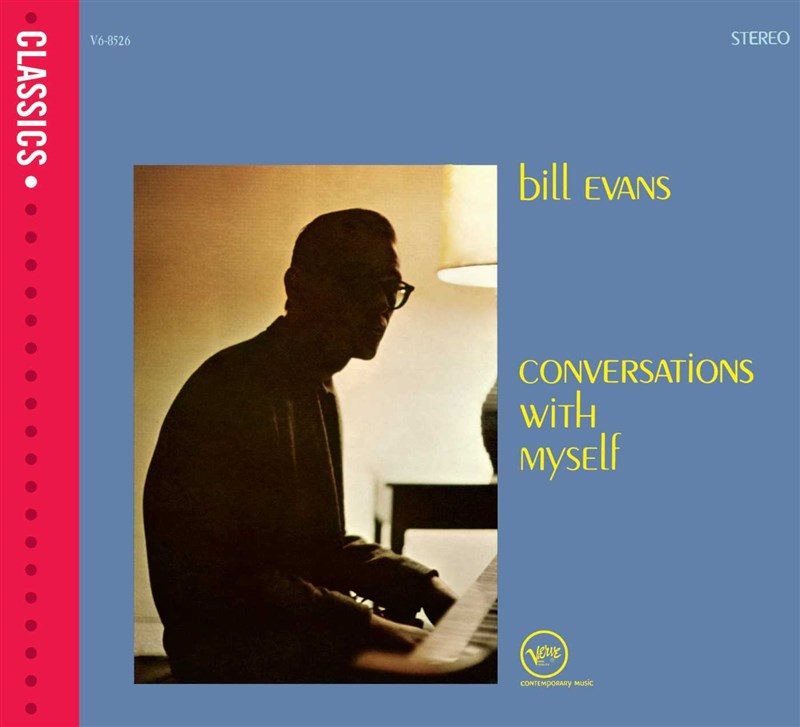

Evans' amazing musical comprehension is given center stage while running through classic jazz sides like "'Round Midnight," "Stella By Starlight" and "Just You, Just Me." "Blue Monk" showcases a muscularity to Evans' playing that he rarely displayed, while the "Love Theme From Spartacus" showcases Evans' signature use of space, time and inference. In each song, it is as if three distinctive "sides" or "personalities" of Bill Evans are playing together.each keenly aware of what the others are doing, and perhaps more importantly, will do. Evans work on the ten tunes included here is truly inspired and amazing to behold. Garnering a 5 star review from Downbeat in 1963, and a Grammy, Conversations With Myself was an instant classic for the jazz community. In 1997 though, the answer is clear, and Conversations With Myself 's inclusion in Verve Master Edition set exemplifies the positive response. If three musicians could practice and play together long enough to be able to carry on musical conversations during a song, then wouldn't the musical ideas expressed and explored by multiple tracks of the same musician be even closer to an "idealized" perfection? In 1963, the answer was unclear. But Evans, one of the most lyrical musicians the jazz world has ever known, was intrigued with taking the "conversational" approach his trio had been practicing to the next logical level. Overdubbing was sneered at by most jazz people, looked at as "gimmicky" and "synthetic". Conversations With Myself was a major undertaking, and perhaps, an even greater risk. The rest, as they say, is history.or rather the album Conversations With Myself. An idea, however, the an album of Bill Evans playing with Bill Evans was hatched, and Evans was game. Drugs, non-focused career management, and bad luck had all conspired to place Bill Evans on tenuous ground, career wise, in 1963. Universally considered as one of the top jazz pianists in history today, in 1963 Bill Evans was yet to experience huge commercial success. And at the center of the debate about this "new" technology was Bill Evans. However, in 1963, the topic of debate was overdubbing, a practice that we regularly take for granted today. Sampling, digital replication, and plagiarism are all issues debated regularly. Today, a great deal of this controversy centers around the use of computers in both the visual and audio arts. Advancements in technology have often been greeted by the artistic community by a split response: Some embrace the new technology and experiment with it, reaching out for new forms of expression that were impossible before others shun the advances, dismissing them and those that use them as poor synthetic substitutions for "real" artistic struggle and creativity. Technology and art have always had a tumultuous relationship at best.


 0 kommentar(er)
0 kommentar(er)
